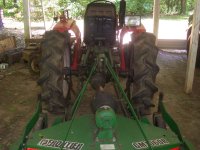OP
Yanmar F15D
New member
- Joined
- May 14, 2024
- Messages
- 11
- Tractor
- Yanmar F15D Forte
@Yanmar F15D that is quite the adventure! I'm not surprised that you doing the repairs yourself raises a few eyebrows. In my very limited exposure to Japanese agricultural practices, my impression was that the expectation was that the service center would fix things. As challenging as they are, I love the small fields, and watching farmers working the small plots.
All the best,
Peter
I was quite surprised how many don't do their own repairs! But I think that is more of a cultural thing here. Most people bring things back in to be repaired rather than fixing them themselves (whether a small appliance or changing engine oil).
I have 4 medium size rice fields I'm using this year. I'll try to find a picture of my Yanmar in action to share. But I agree, it's nice to see the fields come alive this time of the year. The other day when I came home, my neighbor, along with two of his friends (these are men in their 60s), was sitting back relaxing against a house after a long day of cutting weeds eating ice cream, and joking around. A fun sight to see.


